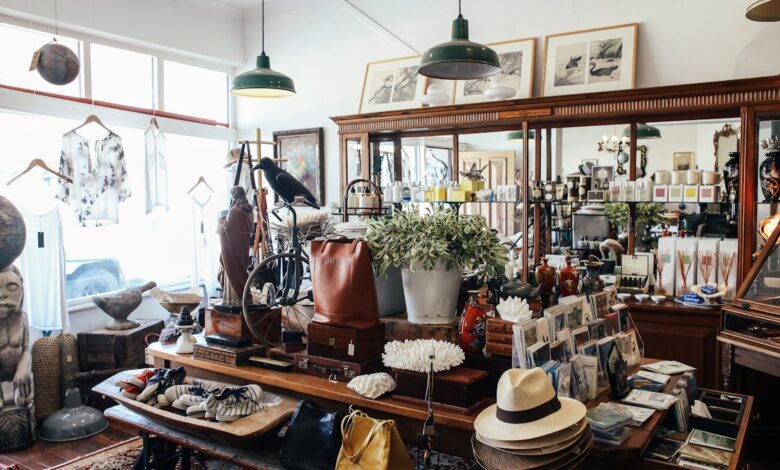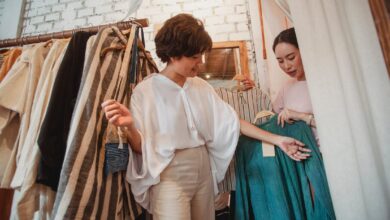Retro Shopping: A Guide to Finding the Perfect Fit

Introduction
In a world where fast fashion dominates, there’s a growing desire for clothing with character, quality, and a story. This longing has turned many fashion enthusiasts toward retro shopping—the art of finding and wearing clothing from past eras. With the internet, it’s easier than ever to find vintage pieces that not only stand out but also reflect a different time’s cultural ethos and craftsmanship.
But, retro shopping isn’t as simple as walking into any store and picking the first old-school item that catches your eye. It’s an adventure that requires knowledge, patience, and a keen eye. If you’re beginning your exploration into this rich mine of fashion history, or if you’re a seasoned vintage seeker looking to refine your approach, this comprehensive guide is for you. Buckle up, because we’re about to take a stylish trip through time!
Understanding Retro Fashion
First things first, what exactly is retro fashion? It refers to new clothing which is designed to resemble the clothing styles of the past. The key to nailing retro is to understand the fashion of different time periods and how to incorporate those styles into a modern wardrobe seamlessly.
Retro fashion usually conjures images of the 20th century, with the most popular eras being the roaring twenties, the wartime forties, the rock and roll fifties, the groovy sixties, and the power-dressing eighties. Each of these periods brought its own trends, colors, and silhouettes, influenced by historical events, social movements, and cultural shifts.
To begin your foray into this world, it’s essential to research the styles of different eras. Look at old photographs, watch movies, and learn about the designers and icons who defined the times. This understanding will serve as your compass, guiding your shopping decisions and ensuring that the pieces you acquire are true to their time.
Tips for Retro Shopping
Researching Styles and Trends
Start by identifying the era or style you’re drawn to. Are you in love with the mod look of the 1960s, the bohemian flare of the 1970s, or the refined elegance of the 1950s? Once you’ve honed in on your preferences, learn the hallmarks of those styles—such as the A-line skirts and geometric patterns of the sixties or the disco silhouettes and earth tones of the seventies.
Identifying Reputable Vintage Stores
The best place to find authentic retro pieces is at vintage stores or online platforms dedicated to selling vintage items. When choosing a store, look for those with a good reputation for authenticity and quality.
Sizing Considerations
Sizing can be wildly inconsistent across decades, so it’s crucial to understand your measurements and the need for flexibility when shopping. A garment from the 1950s, for example, might be several sizes smaller than a modern equivalent. Don’t be discouraged by numbers; focus on how the clothes fit your body.
Styling Tips
Mixing Retro Pieces with Modern Fashion
The real art of retro lies in how you incorporate it into your everyday look. A vintage piece can make a powerful statement when paired with modern basics. For example, a 1980s power suit jacket goes spectacularly with a pair of skinny jeans.
Accessorizing for a Complete Look
The devil is in the details, and this is especially true in retro styling. The right accessories can enhance the period feel of an outfit. A cloche hat for a 1920s look, a floppy sun hat for the 1970s, or a bold geometric necklace for the 1960s—these are the pieces that will tie your look together.
Maintaining Vintage Finds
Care and Storage Tips for Retro Clothing
Retro clothing, especially if it’s several decades old, requires special care. Many fabrics and construction methods have changed, meaning they can be more delicate than what you’re used to. Invest in good quality hangers to avoid stretching clothes, store them in a dry and dark place to prevent fading, and research the best cleaning methods for each item. Some might be hand-wash only, dry clean, or have other specific requirements to maintain their condition.
Adaptation for Modern Life
While some retro pieces will be fine to wear as-is, others may need some tuning to fit into the modern world. Taking an item to a tailor can be a small price to pay for the perfect fit and the ability to confidently integrate it into your daily outfits.
Conclusion
Retro shopping is about more than just the clothes—it’s the thrill of the hunt, the satisfaction of finding that perfect piece, and the joy of wearable history. By learning about the styles you love, mastering the art of the mix-and-match, and caring for your treasured finds, you can make retro not just a fad but a timeless part of your personal style.
Remember, retro isn’t just a fashion statement; it’s a celebration of the individuality, creativity, and craftsmanship of bygone eras. Happy hunting, and may you find the perfect fit that tells your own unique story!




